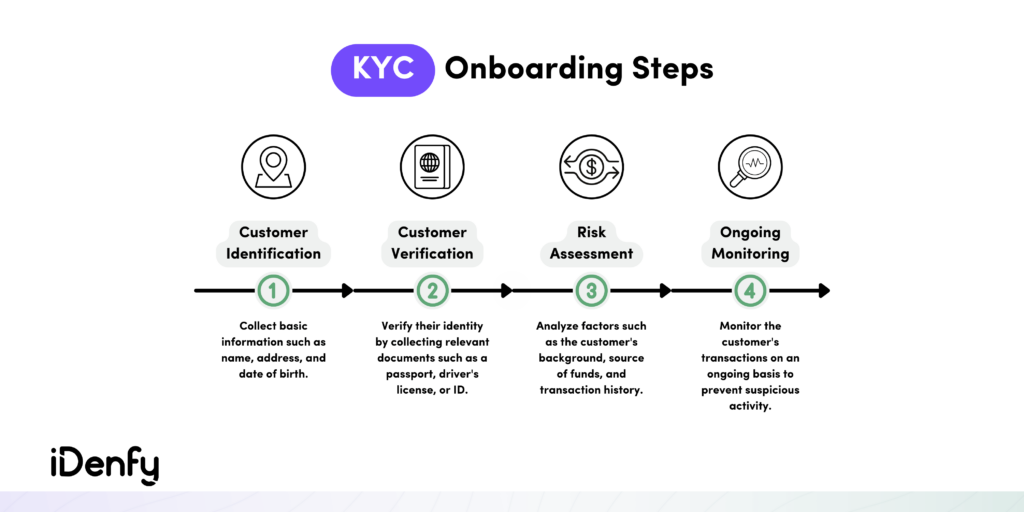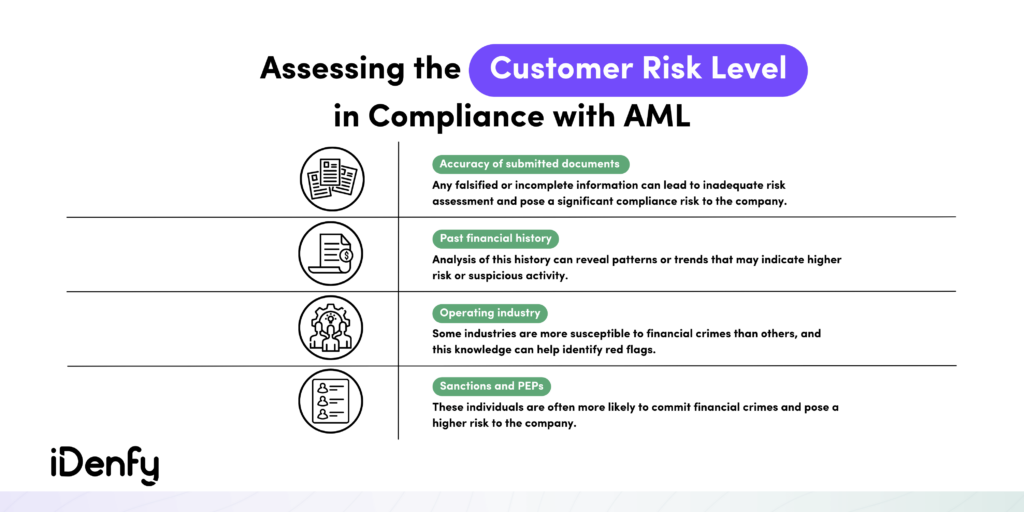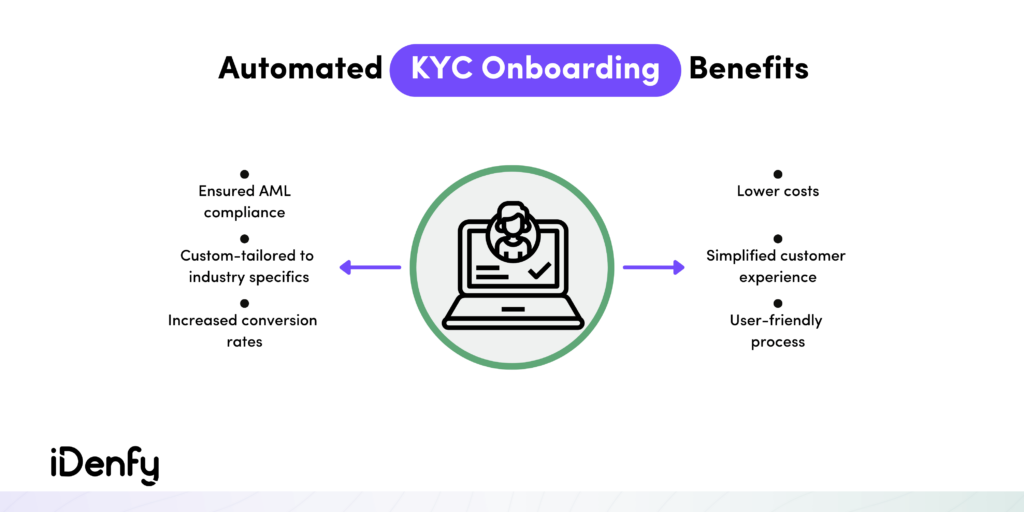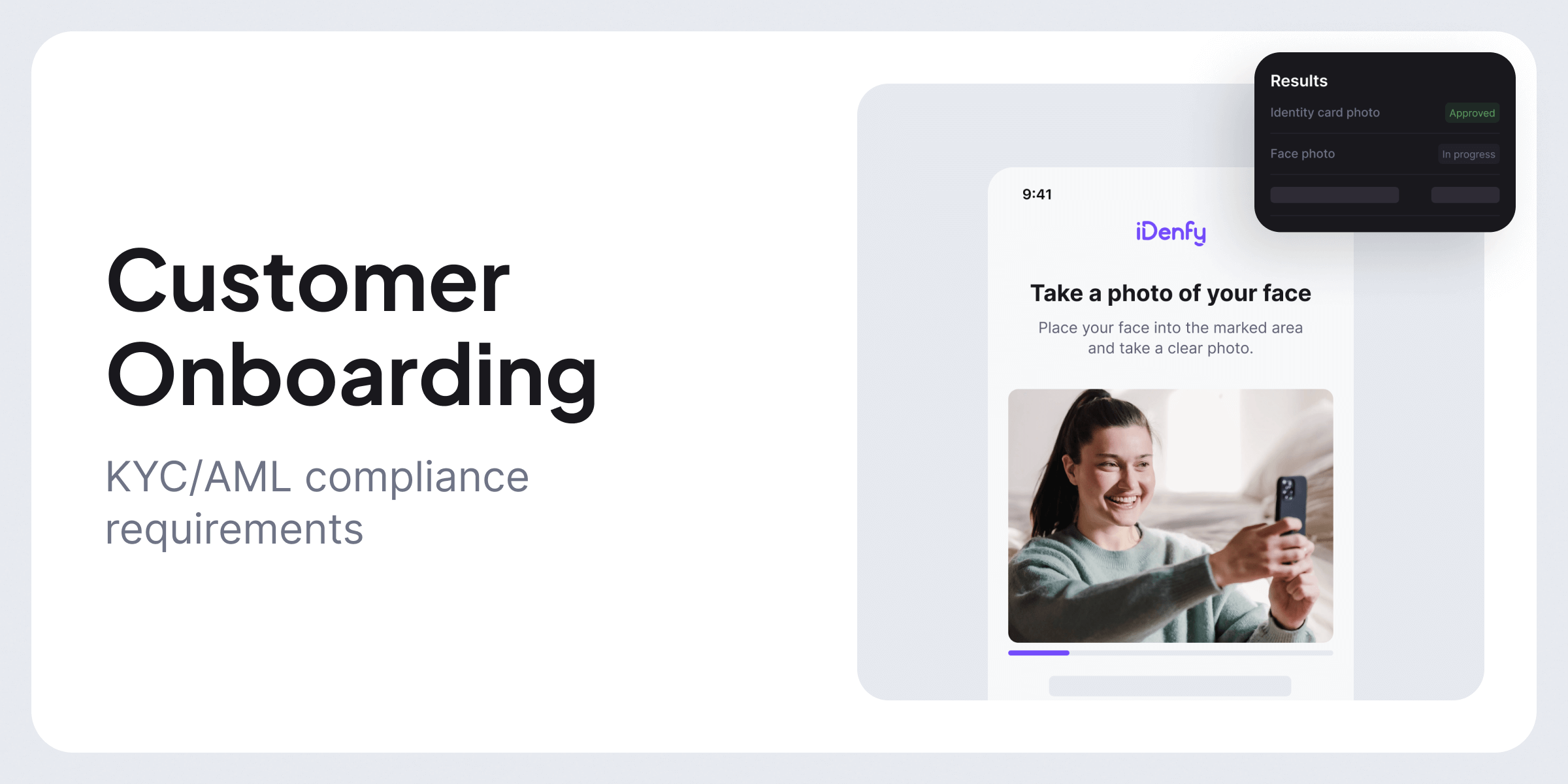A complicated or time-consuming KYC onboarding process can frustrate potential customers and discourage them from doing business with the company. Onboarding is not only the first impression that customers get, but it’s also an essential process to protect both the company and its customers from fraud and other illegal activities.
But what exactly is KYC onboarding? The KYC onboarding process refers to the customer due diligence (CDD) process that financial institutions and other regulated entities must complete before accepting a new customer.
Businesses can prevent fraudulent transactions and protect themselves from legal and financial repercussions by verifying the identities of their customers and ensuring their authenticity. However, the challenge lies in creating an efficient and seamless onboarding process while also complying with Anti-Money Laundering (AML) regulations.
To learn more about how to achieve both goals, continue reading.
What is KYC Onboarding?
The KYC onboarding process involves the necessary procedures that a company must follow to verify a customer’s identity and assess their risk level. The onboarding procedures must be completed before giving the new customer access to any product or service provided by the business.
As one of the steps in the KYC onboarding process, companies may also require specific data points that are linked to the jurisdiction in which they operate. For example, customers in the US may be asked to provide their social security number, while clients in the UK may be asked to provide their national insurance number.
At a minimum, companies must obtain the following set of data during customer onboarding:
- Full name
- Date of birth
- Address
After obtaining the required information from a customer, the company must verify the accuracy of the data to confirm that the person who provided it is indeed the rightful owner. Adhering to Anti-Money Laundering (AML) compliance necessitates this process.
It typically involves requesting the individual to provide a government-issued ID document and a selfie. As an alternative, companies can ask their customers to provide Proof of Address (PoA), which would be a bank statement or a tax bill, for instance.
KYC Onboarding and its Relation to AML
KYC procedures play a critical role in combating financial crime, such as money laundering, corruption, or terrorist financing. That is why KYC procedures are an integral part of AML regulations. For this reason, KYC onboarding checks are mandatory.
This means that obliged entities must conduct these checks every time a new customer attempts to open an account or access a new service. Failing to perform the KYC onboarding process or conduct ongoing monitoring of customer transactions would cause a business to fall short of its KYC and AML obligations. Such non-compliance can result in significant reputational harm and hefty fines.
Who Needs KYC Onboarding?
KYC is necessary for financial institutions, fintech startups, and other businesses dealing with sensitive customer information and financial transactions. Simply put, all AML-obligated industries must apply KYC measures during customer onboarding.
Despite that, the KYC process isn’t designed just for banks. It’s also essential for any business that accepts payments or holds sensitive customer data. E-commerce platforms, cryptocurrency exchanges, and ride-sharing services are just a few examples of businesses that can benefit from KYC.
Other businesses that must build KYC onboarding include:
- Gaming networks
- Virtual asset platforms
- Casinos
- Real estate platforms
- Art marketplaces
- Banks, etc.
🔗 Case study: Find out how Residenture used iDenfy’s end-to-end identity verification solution to build a fully automated KYC onboarding.
KYC Requirements for Customer Onboarding
During the KYC onboarding process, it’s crucial to determine the customer’s identity, intentions, and potential transaction characteristics. In other words, you need to establish both who the customer is and what their actions are likely to entail.
KYC onboarding serves two purposes:
- First, to verify the identity of a customer,
- And second, to assess the level of risk involved in conducting business with them.
This is particularly important for organizations that are subject to AML regulations and must establish a customer risk profile before initiating a business relationship. That said, the KYC onboarding process typically involves the following measures:
- Acquiring the customer’s personal information and identity documents.
- Conducting background checks and verifying the data against reliable sources.
- Screening the customer to check if they have a history of criminal activity, are subject to sanctions, or are a politically exposed person (PEP).
- Determining the customer’s risk level as either high risk or low risk to take further action like AML screening and ongoing monitoring.
- Assessing and obtaining information on the intended nature of the business relationship or transactions, where appropriate.
By adhering to these KYC requirements, businesses can mitigate the risk of money laundering, terrorist financing, and other financial crimes while maintaining an effective AML compliance program.

CDD and EDD in the Context of Customer Onboarding
Customer Due Diligence (CDD) and Enhanced Due Diligence (EDD) are two important components of the KYC onboarding process.
CDD is a standard process that involves verifying a customer’s identity and assessing the risk associated with doing business with them. CDD checks must be conducted regularly as long as the customer relationship continues, which entails keeping track of transactions and updating records.
EDD, on the other hand, is a more in-depth process reserved for high-risk customers, for example, politically exposed people. EDD also involves conducting additional due diligence measures, such as conducting more extensive background checks or obtaining additional documentation.
If no suspicious activities are detected during the previous checks, the customer’s account is approved during the onboarding.
By implementing both CDD and EDD measures as part of the KYC onboarding process, companies ensure AML compliance, which requires conducting regular checks. This includes monitoring their customers’ financial transactions.
How to Comply with KYC and AML Regulations for Customer Onboarding?
To comply with KYC and AML regulations for customer onboarding, companies must obtain up-to-date customer data, including ID documents, and assess potential risks associated with the customers. On top of that, businesses must implement ongoing monitoring measures to detect and report any suspicious activities.
We’ve gathered key steps to help comply with KYC and AML below:
✔️ Implement KYC guidelines. Compliance officers must follow a clear structure when handling customer data. They are responsible for the customer identification process and verifying the accuracy of their information. If the customer data can’t be verified, the other data they provided may also be incorrect.
✔️ Examine the customer’s history. After completing the initial customer identification and verification process, the company does a background check on the customer. This involves checking the customer’s financial transactions. If the company detects any fraudulent events, it must take appropriate actions to mitigate the risk and avoid doing business with such an entity.
✔️ Conduct a risk assessment. The last stage requires companies to conduct a risk assessment consisting of CDD processes. They typically involve screening for PEPs, sanctions, and adverse media. Individuals who fall into these categories are considered high-risk customers. Consequently, businesses must evaluate all the risks during the account opening process and implement appropriate measures.
Customers are subject to the EDD process if they are classified as high-risk. Nonetheless, if there are no red flags throughout these checks, businesses can give access to the customer and open their account.

How to Enhance the Customer Onboarding (KYC) Process?
There are key points that you must have in mind when building an efficient customer onboarding process:
- Automating the verification process for KYC and AML requirements can speed up the procedure and save costs for the company.
- Tailoring the customer onboarding process is crucial, as not all customers can be onboarded similarly.
Businesses subject to AML regulations must perform appropriate KYC checks, including identity verification, before engaging with a new customer. However, if this process is excessively inefficient, it can significantly decrease conversion rates.
That’s why companies with slow, complex, and time-consuming onboarding procedures may encounter difficulties attracting and retaining customers. To solve this issue, businesses can choose an automated KYC service provider offering customization options.
For example, when users register for the first time, they can undergo a few-step ID verification that checks their identity quickly without a complicated process. This simplifies KYC onboarding and encourages users to complete the full verification process after becoming familiar with the service.

🔗 Related: How to Improve KYC Verification? Tips For a Frictionless User Experience
AI-powered KYC Onboarding Solutions
With AI, companies can carry out KYC checks more accurately, quickly, and efficiently, reducing the need for manual intervention. As automation allows for real-time data verification, it reduces the possibility of errors, ultimately helping companies save time and resources.
An AI-powered system can reduce drop-offs during the onboarding process by automatically capturing the necessary document fields. Additionally, AI-powered identity verification solutions provide more detailed customer risk profiling, which helps businesses identify high-risk customers and take appropriate actions.
At iDenfy, the identity verification interface can be customized to suit any language, ensuring global coverage and a high conversion rate. iDenfy’s KYC onboarding solution can also be white-labeled to reflect any company’s branding to match the company’s image. Additionally, the interface provides users with detailed tips on how to pass verification, making the process more straightforward.
Talk to us to find out more and learn how you can save up to 75% on onboarding costs.




